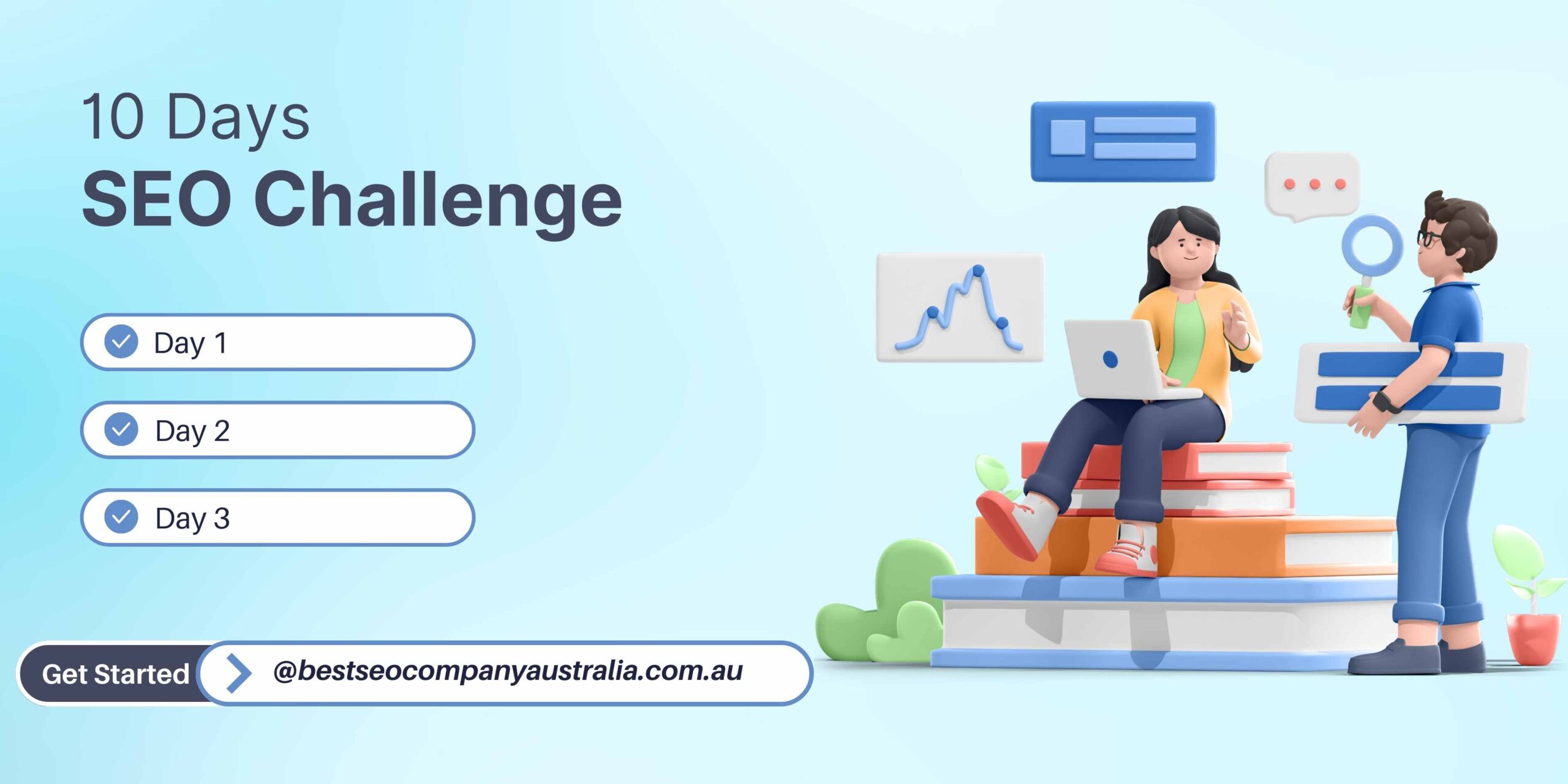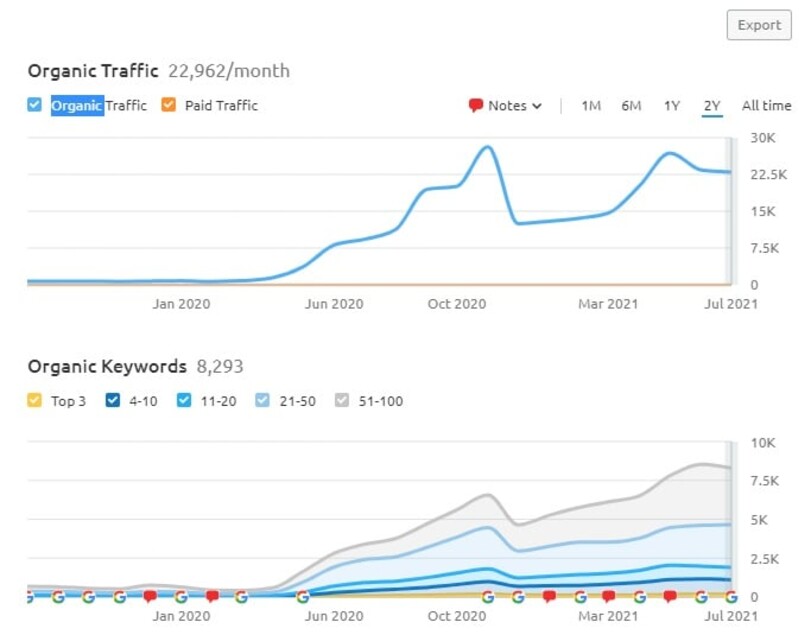Before we start, it’s important to understand that search engine optimization (SEO) is an ongoing process that requires continuous effort and optimization. However, this challenge will help you establish a good foundation for your website’s SEO.
Here are some tasks you can complete over the next 10 days to improve your website’s SEO:
Day 1: Conduct Keyword Research
Identify the primary and secondary keywords for your website or a specific page. Use keyword research tools like Google Keyword Planner, SEMrush, or Ahrefs to find the best keywords for your content.
Keyword research is a critical aspect of any online business’s success. It involves identifying and analyzing the keywords and phrases that people use to search for products or services related to a business.
Understanding the intent behind these keywords can help businesses create content that meets the needs of their target audience and improve their search engine rankings.
Explanation of Keyword Research
Keyword research is the process of identifying the keywords and phrases that people use to search for products, services, or information online. It’s an essential step for online businesses as it helps them understand what their target audience is looking for and create content that meets their needs.
Importance of Keyword Research
Keyword research can help online businesses improve their search engine rankings, increase organic traffic to their website, and attract potential customers. It’s a crucial element of any successful digital marketing strategy.
Understanding Keyword Research
Definition of keywords
Keywords are words or phrases that people use to search for something online. They are the terms that businesses target in their content to improve their visibility in search engines.
Types of keywords
1. Short-tail keywords
Short-tail keywords are one or two-word phrases that are general and broad. They have a high search volume but are also highly competitive. For example, “shoes” or “laptops.”
2. Long-tail keywords
Long-tail keywords are more specific and typically consist of three or more words. They have a lower search volume but are less competitive. For example, “women’s running shoes” or “best laptops for students.”
3. LSI keywords
Latent Semantic Indexing (LSI) keywords are related terms and phrases that are semantically related to the main keyword. They help search engines understand the context of the content better. For example, “sneakers,” “running shoes,” and “athletic footwear” are LSI keywords for “shoes.”
The role of search intent in keyword research
Search intent refers to the reason why people search for a specific keyword. It’s essential to understand search intent to create content that matches the searcher’s needs. The four types of search intent are navigational, informational, commercial, and transactional.
Conducting Keyword Research
Identifying seed keywords
Seed keywords are the starting point for keyword research. They are the words or phrases that describe the primary topic of the content. For example, if the topic is “digital marketing,” the seed keywords could be “SEO,” “social media,” or “content marketing.”
Using keyword research tools
1. Google Keyword Planner
Google Keyword Planner is a free tool that helps identify keywords and phrases related to the primary topic. It provides data on search volume, competition, and cost-per-click (CPC).
2. Ahrefs
Ahrefs is a paid tool that offers keyword research, competitor analysis, and backlink analysis. It provides data on search volume, keyword difficulty, and organic search traffic.
3. SEMrush
SEMrush is a paid tool that offers keyword research, competitor analysis, and backlink analysis. It provides data on search volume, keyword difficulty, and organic search traffic.
Analyzing search volume and competition
1. Keyword difficulty
Keyword difficulty refers to the competition level for a specific keyword. It’s essential to choose keywords with a low competition level to increase the chances of ranking higher in search engine results pages (SERPs).
2. Search volume
Search volume refers to the number of times a keyword or phrase is searched for in a specific period. It’s important to choose keywords with a high search volume to attract more traffic to the website.
3. Click-through rate
Click-through rate (CTR) refers to the number of clicks a website receives in relation to the number of impressions or views. It’s essential to choose keywords that have a high CTR to increase the chances of getting clicks on the website.
Narrowing down the list of keywords
1. Filtering by relevance
Relevance refers to the degree to which a keyword or phrase relates to the primary topic. It’s important to choose keywords that are highly relevant to the content to improve the chances of ranking higher in SERPs.
2. Analyzing user intent
User intent analysis helps to understand why people search for a specific keyword or phrase. It’s essential to choose keywords that align with the searcher’s intent to increase the chances of getting clicks and conversions.
3. Evaluating the competition
It’s important to choose keywords that have low competition to improve the chances of ranking higher in SERPs. Analyzing the competition level helps to choose keywords that have a higher probability of ranking higher.
4. Prioritizing keywords
Prioritizing keywords helps to focus on the most important keywords for the content. It’s essential to choose keywords that have a high search volume, low competition, and high relevance.
Using Keywords for SEO
On-page optimization
1. Title tags
Title tags are the first thing that appears in the SERPs. It’s essential to include the primary keyword in the title tag to improve the chances of ranking higher in SERPs.
2. Meta descriptions
Meta descriptions provide a brief summary of the content that appears in the SERPs. It’s essential to include the primary keyword in the meta description to improve the chances of getting clicks.
3. Header tags
Header tags (H1, H2, H3, etc.) help to structure the content and make it easier to read. It’s important to include the primary keyword in the header tags to improve the chances of ranking higher in SERPs.
4. Content optimization
Content optimization involves creating high-quality content that aligns with the primary topic and the chosen keywords. It’s important to use the primary keyword and LSI keywords throughout the content to improve the chances of ranking higher in SERPs.
Off-page optimization
1. Backlinks
Backlinks are links from other websites that point to the website. It’s important to build high-quality backlinks to improve the website’s authority and increase the chances of ranking higher in SERPs.
2. Social media
Social media platforms help to promote the content and attract more traffic to the website. It’s important to share the content on social media to improve the website’s visibility.
Best practices for using keywords in SEO
- Use keywords in the URL.
- Use keywords in the image alt tags.
- Use keywords in the anchor text of internal links.
- Avoid keyword stuffing.
Day 2: Optimize Your Website Structure
Ensure that your website structure is clear and easy to navigate. Make sure all pages have descriptive URLs, and create a sitemap to help search engines understand the structure of your website.
Day 3: Optimize Your Meta Titles and Descriptions
Ensure that your meta titles and descriptions accurately describe the content of your pages and include your primary keywords.
Day 4: Optimize Your Content
Create high-quality content that is informative, engaging, and optimized for your primary and secondary keywords.
Day 5: Optimize Your Images
Make sure your images are optimized by using descriptive file names, alt tags, and captions that include your primary and secondary keywords.
Day 6: Build Internal Links
Create internal links between related pages on your website. This will help search engines understand the structure of your website and improve user experience.
Day 7: Build External Links
Build external links by reaching out to other websites and asking them to link to your website. This will improve your website’s authority and visibility.
Day 8: Optimize For Mobile
Make sure your website is optimized for mobile devices. Use a responsive design and ensure that your website is fast and easy to navigate on mobile devices.
Day 9: Monitor Your Analytics
Use Google Analytics to monitor your website’s performance. This will help you identify areas for improvement and track your progress over time.
Day 10: Continuously Optimize
SEO is an ongoing process, so continue to monitor your website’s performance and make adjustments as needed. Stay up-to-date on the latest SEO best practices and trends to ensure your website stays ahead of the competition.
Remember, SEO is a long-term strategy, and it takes time to see results. However, by following these tasks and staying consistent, you can improve your website’s visibility and attract more traffic to your website.











